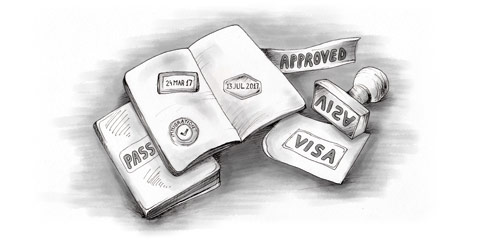When a student or participant is admitted to a study or exchange programme that qualifies them for a visa (categories F, J and M below), they’re registered in the SEVIS system and the appropriate form confirming this is sent to the participant (I-20, I-20M or DS-2019, depending on the type of programme involved). The confirmation form and proof of payment of the SEVIS fee are required as part of the documentation you must provide at your visa interview.
Those entering the US under any of the SEVIS visa categories aren’t admitted into the country more than 30 days before the official start of their classes, course or programme, and in fact, ICE recommends that you don’t arrive more than ten days in advance unless you can document the reason for your early arrival.
Fear of terrorism
SEVIS has been a high priority issue for the HSD, due to the discovery that most of the terrorists who carried out the 11th September attacks had gained entry to the country using student visas for flight training schools. The manual system in place for tracking students was notorious for losing track of those who had never shown up for classes, dropped out of their programmes or simply failed to go home after completing them.
The system is designed to track all activity of students and exchange participants, from the time they’re first accepted into a school or programme through their arrival in the US, their enrolment in school, class attendance, grades received, eventual completion of the programme (or dropping or flunking out) and their return to their home country. More information is available on the SEVIS website (http://www.ice.gov/sevis/index.htm ).
This article is an extract from Living and Working in America. Click here to get a copy now.

